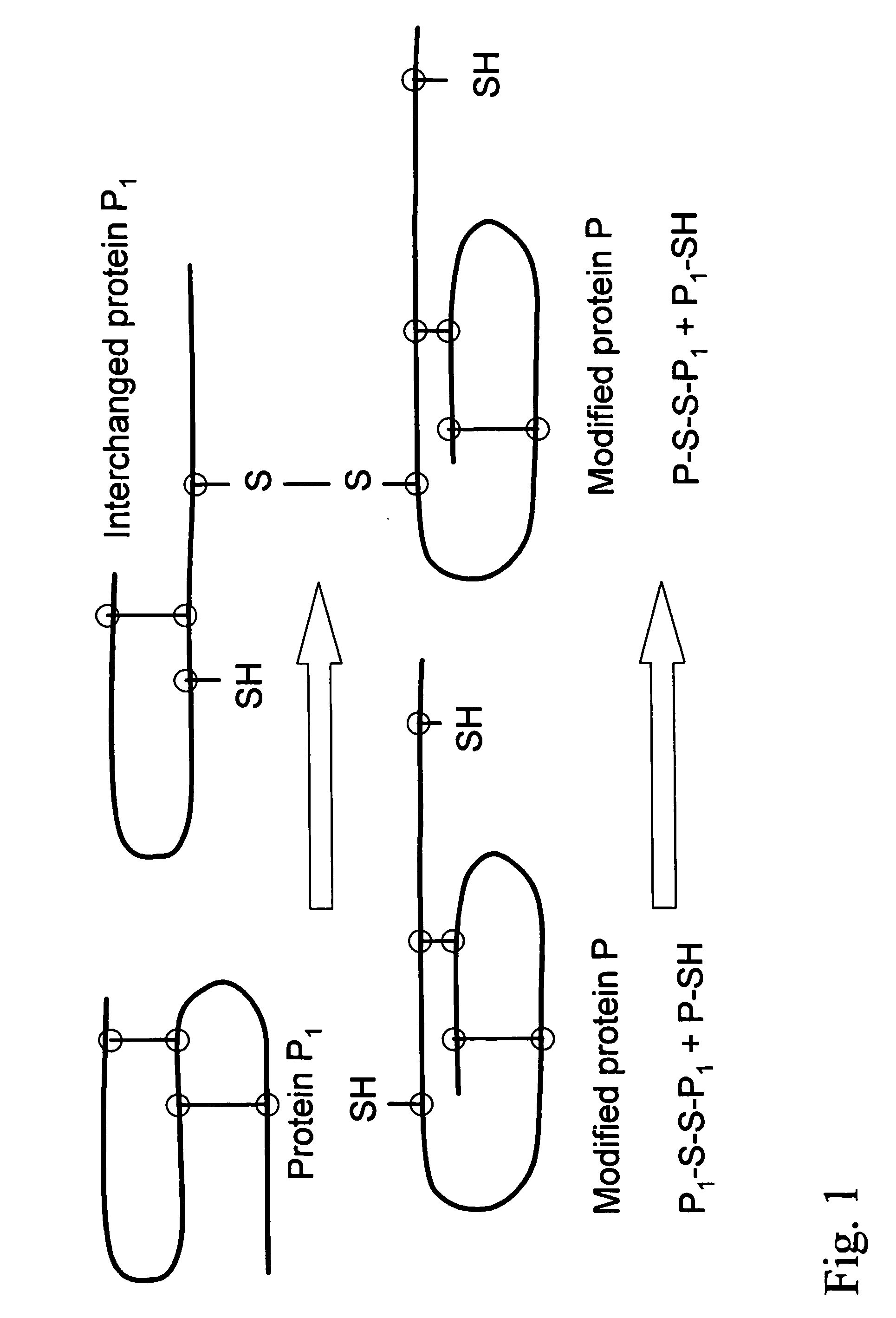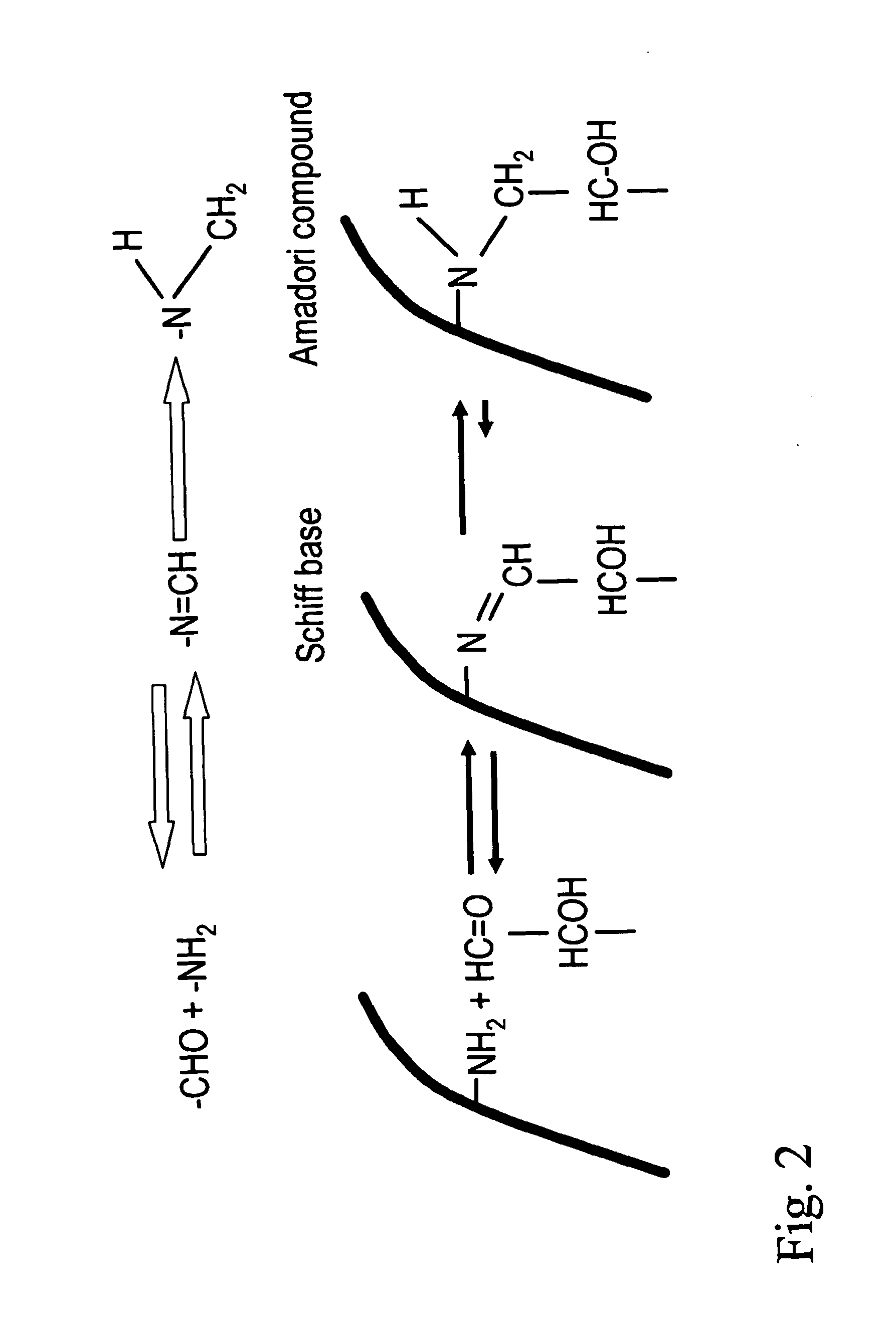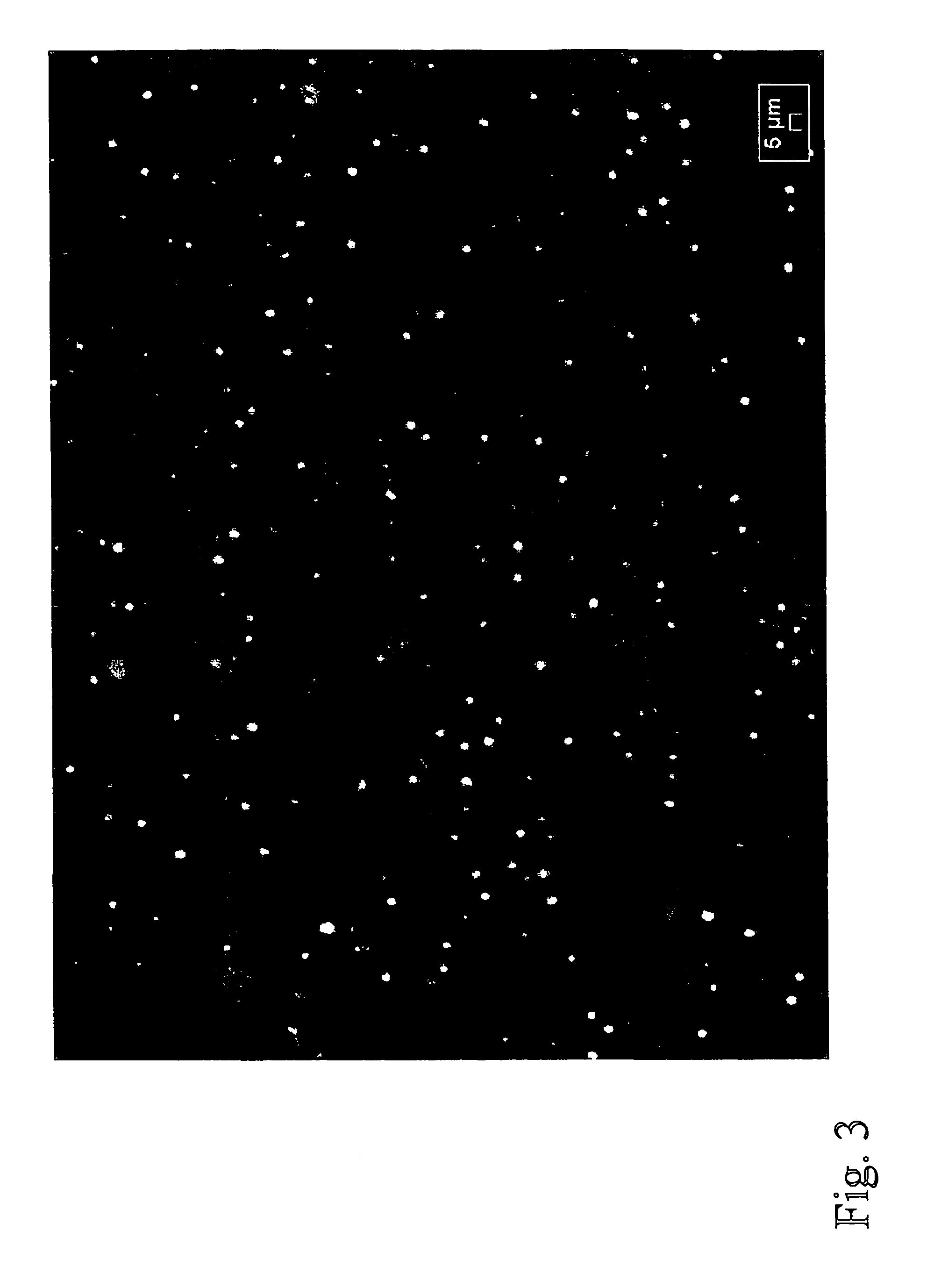Method for preparing film coatings and film coating
a technology which is applied in the field of film coating and film coating, can solve the problems of unmodified protein amount, achieve the effects of reducing the permeability of films, slowing down the effects of proteolytic enzymes, and strengthening the protein structur
- Summary
- Abstract
- Description
- Claims
- Application Information
AI Technical Summary
Benefits of technology
Problems solved by technology
Method used
Image
Examples
example 1
[0104] Method of Preparing ASWP Films
[0105] ASWP (i.e. activated soluble whey protein) films were prepared from the fraction obtained from a protein isolation process, such as described in FI 107116. The present ASWP comprises activated pure β-lactoglobulin in which the number of free SH groups (35-45 μmol / g in the protein) has been increased without any heating treatments.
[0106] Aqueous solution of ASWP comprising protein 4% (w / w) and glycerol 2% (w / w) was prepared. The pH of the solution was adjusted to pH 7.0 by using 1 M NaOH solution. The solution was stirred well and poured carefully (20 ml) into the Petri dishes (85 mm in diameter and made of polystyrene) for preparing the free films. The free films were allowed to dry at the horizontal level at 22° C. / RH 45% for at least 22 hours. After drying the films were carefully peeled. They were transparent and elastic.
example 2
[0107] Effect of Heating on the Formation and Properties of ASWP Films
[0108] Aqueous solutions of ASWP comprising protein 3% and 4% (w / w) and glycerol 1% and 2% (w / w) as a plasticizer were prepared. The following heating treatments were used (tested) for the solutions: 70° C. / 10 min; 70° C. / 20 min; 80° C. / 10 min; 80° C. / 20 min (Table 1).
TABLE 1Compositions for the ASWP solutionsused in the heating experiments.Composition (% w / w)Component12345678ASWP34343434Glycerol12212112Heating70° C. / 70° C. / 80° C. / 80° C. / 10 min20 min10 min20 min
[0109] The ASWP solutions were stirred and the samples (compositions 1-8) were heated in the water bath. Following the heating for the predetermined period (10 min or 20 minutes), the samples were cooled at about room temperature (20-22° C.) and carefully pipetted to the Teflon molds (6.6 ml to each mold). The films obtained after drying were transparent and elastic. Adherence of the films was smaller if the heating temperature was kept high and the heat...
example 3
[0110] Interchange Protein Free Films
[0111] Originally filtered whey protein concentrate and soluble whey protein fraction were mixed at a ratio of 70:30 to prepare 9% (w / w) aqueous solution. Glycerol and sorbitol were used as plasticizers at a level of 3% (w / w) and 1% (w / w), respectively. The pH of the solution was adjusted to pH 7.0 (1 M NaOH). The solution was heated for 30 min at 80° C., cooled down to room temperature (20-22° C.), and poured to the Teflon molds. The films were dried at a room temperature (21° C. / 45% RH) overnight. The films obtained were transparent and elastic.
PUM
| Property | Measurement | Unit |
|---|---|---|
| pH | aaaaa | aaaaa |
| diameter | aaaaa | aaaaa |
| Temperature | aaaaa | aaaaa |
Abstract
Description
Claims
Application Information
 Login to View More
Login to View More - R&D
- Intellectual Property
- Life Sciences
- Materials
- Tech Scout
- Unparalleled Data Quality
- Higher Quality Content
- 60% Fewer Hallucinations
Browse by: Latest US Patents, China's latest patents, Technical Efficacy Thesaurus, Application Domain, Technology Topic, Popular Technical Reports.
© 2025 PatSnap. All rights reserved.Legal|Privacy policy|Modern Slavery Act Transparency Statement|Sitemap|About US| Contact US: help@patsnap.com



